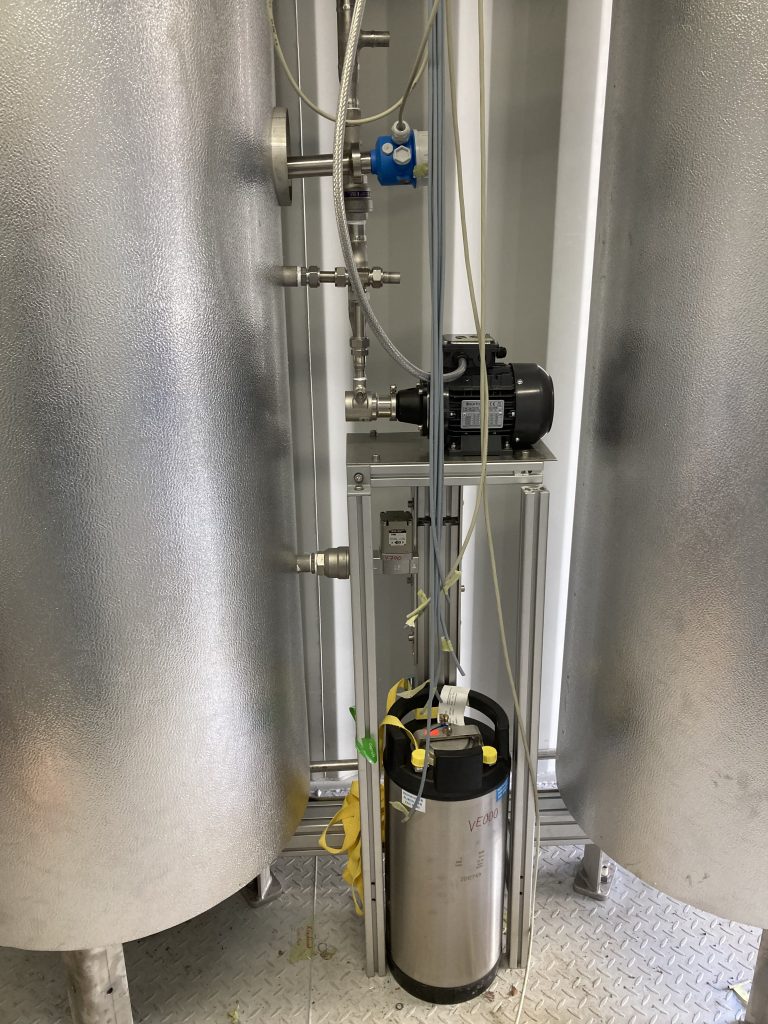The new developed and innovative PROEMTEC units represent the worldwide current and leading technologies for resource-saving helium recovery.
Our technology convinces by a very low energy requirement and makes a decisive contribution to economically and environmentally friendly working processes.
Outstanding is the degree of recovery of up to 98% and the high purity of the helium of up to 99.5%.
Even helium mixed with air can be cleaned to a degree of over 99%.
The units can be operated as an addition to the proven PROEMTEC leakage testing units or even independently.

The units are manufactured in customized dimensions and with individually modified parameters to reach an optimal cost-effectiveness for the customer.
The payback period of the unit is in most cases at only 1.5-2 years.
Technical parameters (of a small unit):
Dimensions: 800 x 800 x 1500 mm (LxWxH)
Weight: ca. 500 kg
Degree of recovery: up to 98 % of the consumed helium, also helium mixed with air is possible
Purity of the recovered helium: up to 99.5 %
Do you have any questions?
We would be pleased to advise you considering all queries related to helium recovery.
Feel free to call us or send an email with your inquiry.
Your questions about the scarce raw material helium
How is liquid helium produced?
Today, liquid helium is mainly produced by cooling air or natural gas to a temperature of -270°C. In this way, the helium can be produced with a purity of more than 99.99%. This process requires a complex coolinf system, which has a very high energy requirement. Modern procedures use a membrane as an intermediate stage in order to slightly reduce the energy consumption. For this reason, Proemtec uses a gas separation process for recovery, which achieves a lower purity. But a gas with a purity of 99% is well sufficient for the majority of applications.
When does helium become liquid?
Helium has a melting point of some below 1 K and changes the state of matter from liquid to gaseous at about 4 K, which corresponds to a temperature of -269 ° C. Due to the extreme cold that is needed, liquid helium is only used where the cooling close to absolute zero of temperature is required. Helium is mainly used in technology as a gas in test institutions for leakage tests, as it is the element with the smallest atomic size after hydrogen. Liquid helium is used for cooling at the lowest temperatures. Thus a cooling for temperatures of about 1 K can be realized.
Helium recovery – how does it work?
The recovery of high-purity helium is generated by cooling a mixed gas, which consists mainly of air and helium. For the recovery of helium from technical systems such as leak testing systems, the helium is separated from the mixture produced during the test. Gas separation is sufficient for the separation of helium. With gas separation, a purity of helium of up to 99% can be achieved.
For this gas separation, the mixture is pumped through a multi-stage filter device with different pressure levels. In the filters, the helium passes through the fine-pored side and the air escapes through the coarse-pored side.
Why recover helium?
The recovery of helium makes sense for economic reasons and is important for the protection of the environment. A plant for the recovery of helium in a leak detection system has a payback period of 1.5 to 2 years. The cost savings are the difference between the manufacturing and operating costs of a recovery plant and the costs of purchasing helium in bottles.
Is helium toxic?
Helium is a non-toxic noble gas. It is represented in the atmosphere with about 5 ppm (parts per million). In natural gas, the helium content is much higher and can be over 10%. However, there are also natural gas sources with a helium content of 0.3% or less. With a reduction in natural gas consumption, helium recovery will become increasingly important as global helium consumption increases and natural gas consumption decreases. A world without natural gas consumption would depend on extraction from air and a good recovery system.